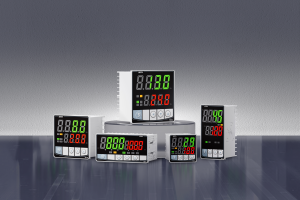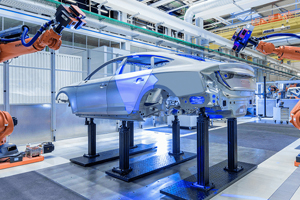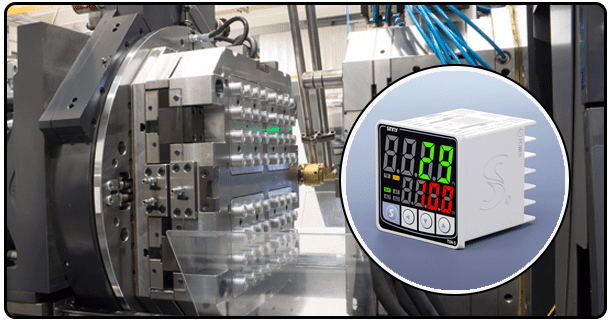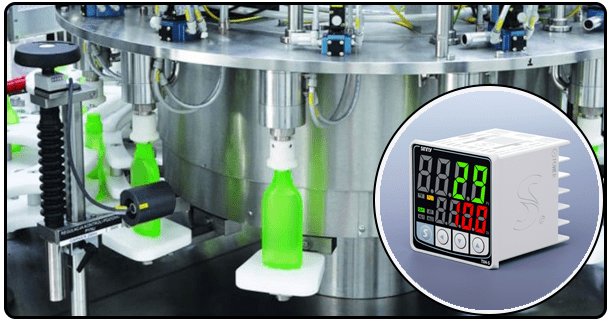Understanding PID temperature controller 12V : A detailed guide
1. Introduction
This article will describe its components, explain the basic principles that govern its operation in a closed loop control system, examine common implementation issues, and look at the tuning process. This in-depth analysis will give readers a comprehensive understanding of the technology and its applications within a 12V environment. They can then use it to their advantage for various systems.
2. What is PID temperature controller 12V?
A PID temperature controller 12V is essentially a specialised electronic device designed to manage the temperature of a specific process variable by employing the Proportional-Integral-Derivative (PID) control algorithm. It is a closed loop control system that continuously monitors the temperature to be controlled, and makes calculated adjustments in order to get it closer or further away from a set temperature. This controller is designed to work with a 12 Volt DC power supply. The 12V specification allows it to be compatible with many power sources, batteries, vehicle electrical systems and portable power bank. III. What is the PID temperature controller 12V? Control loop explained
A PID 12V temperature controller operates on the basis of closed loop control principles. The system works by a constant cycle of measuring, comparing, calculating, and taking action. Here are the main steps:
A. Basic control loop:1. Measurement of Sensors: This process starts with a temperature sensor that is placed strategically to determine the exact temperature in the system or environment. The sensor will convert the physical temperature to an electrical signal. This is usually a voltage change or resistance variation proportional with the temperature. Sensors include thermistors, Resistance Temperature Detectors and thermocouples.
2. Calculate Error: The electrical signal is sent to the PID unit. This raw signal from the sensor is then compared to a value or voltage that corresponds with the Setpoint Temperature. Calculate the difference between the temperature measured and the setpoint. The error is used as the main input for the PID algorithm. The error will be negative if the temperature measured is greater than the setpoint; it'll be positive if the temperature measured is lower.
3. Execution of the PID algorithm: This error signal is processed by a PID controller that's often built on top of a microcontroller. Its core function is the PID algorithm which uses three terms to calculate corrective action.
Proportional P-Term: The term produces an output signal directly proportional with the magnitude of error. It can be expressed mathematically as P_output=Kp*Error where Kp represents the proportional gain. A larger error results in a stronger P output. It is a quick response that tries to minimize the error. However, it can leave residual errors if the ability of the system to react quickly is restricted.
* The term is used to describe the accumulation of errors in time. The error signal is integrated (e.g. Error* dt), and the output increases or decreases as long as there are errors, no matter how minor. Mathematically I_output is equal to Ki * Error Dt where Ki represents the integral gain. I_output is primarily used to remove steady-state errors. It works tirelessly to bring the temperature of the system to its setpoint even for small mistakes that P_term may not be able to fully correct.
* The Derivative D Term (): It predicts the future error based on how fast the current errors are changing. The derivative (d(Error/dt), is calculated and an output generated that counters rapid changes. D_output is calculated mathematically as Kd* d(Error/dt), where Kd represents the derivative gain. D-term acts as a dampening force to reduce oscillations which could occur if P or I act aggressively and cause the temperature overshoot its setpoint. This also helps to anticipate the need for a correction, which can lead to an initial reaction that is quicker.
4. Generation of Control Signals: In the controller, the combined output from P, I and D terms are added (or weighted). This results in the total control signals. The signal indicates the level of correction required - whether heating or cooling should be increased. This signal can be analog or digital, depending on how it is implemented.
5. Control of the Actuator: The generated control signal will be sent to the actuator which is responsible for implementing control actions physically. The actuator controls the amount of heating or cooling that is applied to the process. A positive signal could increase power for a heater element, or turn on a cooling system, while a negatively signal would decrease the heating, or switch on a fan or heating element. Solid State Relays are commonly used to switch power on resistive loads such as heating elements. MOSFETs can be used to control Peltier devices for cooling or to manage higher current loads because of their high efficiency.
6. Feedback Action taken by actuators directly affects the temperature of the process. As the system temperature changes, it is a feedback loop. The sensor measures this new temperature, and then the loop is repeated, creating an ongoing feedback system that moves the temperature toward the setpoint.
B. Importance 12V Power Supply: "12V", the label on the controller, is not just a design element but an important one. A controller that is 12V compatible would be very useful, especially in applications such as automotive, battery-powered electronics, or consumer products. For optimal performance, the controller, which contains the microcontroller and sensors, needs different internal voltages. The 12V is then fed to a voltage regulator in the controller. This circuit, which uses components such as Linear Regulators and Switching Regulators can generate lower voltages that are needed for internal logic. Power section of the controller is designed to safely and efficiently step-down or condition 12V for its internal components. The final control (e.g. PWM, analog voltage, or SSR) is then applied to the heating element or cooling device via an interface powered by 12V (or by a separate, low-voltage signal).
IV. The PID Temperature Control 12V has the following features and components:
Understanding the key features of the PID 12V controller and its specific components is essential to selecting the best one. They work in tandem to provide accurate and reliable temperatures regulation. Understanding the key features of the PID 12V controller and its specific components is essential to selecting the best one. They work in tandem to provide accurate and reliable temperatures regulation.
A. Temperature sensor interface:
1. Compatible: A controller interface must be compatible with the temperature sensor required by an application. Sensor types have a significant impact on accuracy, range and response time. Sensor types that are supported by the controllers include
* Sensors Digital: For example, the DS18B20 which offers a high-precision digital output, simplifies integration, and is easy to integrate. It is common to only need one wire when using multiple sensors.
* Analog Sensors: For example, NTC or PTC thermistors, which have a resistance that changes with temperature, and RTDs, Resistance Temperature Detectors, (e.g. PT100 and PT1000) which measure resistance.
1. Sensor Connect: It is important to use the correct physical and electrical connections. For ease in connecting sensor wires and power supply cables, screw terminals are commonly used. Banana connectors and screw terminals combined with Banana heads are often used to make connections easier, particularly for prototyping. Specific connection standards are required for digital sensors such as the DS18B20 (e.g. 1-Wire).
B. Power Supply:
1. Voltage Input: A standard DC 12V input is accepted as the core feature of this design. Typically, the 12V supply unit is external to controller units. This 12V power supply is usually external to the controller unit.
1. Power rating: Both the controller and actuators (heater, coolant) require significant current. It is therefore vital to select an external power supply 12V with the right current capability. Power supply voltage should be stable, and set to 12VDC. Current rating should be higher than sum of controller power and maximum actuator current. It is important to use a power source rated according to the load expected.
C. Options for Actuator control: A controller must have a way to regulate the actuator in response to the signal. Interface requirements are dictated by the choice of actuator.
1. Solid State Relay (SSR): A SSR is an electronic switch that can be controlled via the output of a controller. It's typically used for controlling resistive loads such as heating elements. A control signal is generated by the controller (often analog voltage or PWM) and drives the SSR. This signal is then used by the SSR to either allow current to flow into the heating element or modulate power to be delivered smoothly. The modulation provides a more accurate control than simple on/off switching.
The 12V SSR controller configuration is common. In this case, the SSR's temperature is controlled directly by the PWM 12V signal produced by the controller. SSR powers the load from the 12V supply.
1. The controller generates low voltage control signals (e.g. PWM) which drive the MOSFET gate, and in turn, controls power to the load. Loads such as heaters and coolers are often directly connected to 12V pins of the controller (e.g. controlling an SSR, MOSFET).
D. Control logic:
1. Microcontroller: A microcontroller is at the heart of a digital PID controller. The PID algorithm is executed by a MCU, such as Arduino, ESP32 or STM32. The MCU reads sensor data and calculates PID terms. It then generates a control signal and drives actuator interface. MCUs are chosen based on their processing power, cost, I/O capability, and other factors.
1. Tuning PID: To achieve optimal performance, tuning PID parameters is required: Proportional gain (Kp), integral gain (Ki) and derivative gains (Kd). The controller's aggressiveness is determined by the tuning. Some controllers allow manual tuning using potentiometers or displays. Others have auto-tuning options, and others require software.
(Optional, but Common) User Interface: A basic controller may only include screw terminals with minimal indicators. However, most implementations have an HMI to make it easier for the user.
1. Display : A LCD screen or an OLED display is commonly used to indicate the temperature at the moment, the current setpoint and the state of the system.
1. Inputs A potentiometer or buttons allow the user to adjust manually the PID parameters and set the set point temperature.
1. Display: The LEDs display the state of the system and how the controller is operating.
F. Connection: Physical connections are crucial for easy setup.
1. Screw terminals: Offer a common and robust method of connecting wires for sensor, power, and actuator outputs.
1. Headers/Banana Jacks: Provide a convenient way to connect, which is often used on custom circuits or development boards.
1. Sensors Digital: connections follow standard standards. For example, a 3-wire connection is used for RTDs/Thermocouples and DS18B20 sensor digital.
3.Uses for a 12V PID controller
The Advantages of using a 12V PID Temperature Control
A. High accuracy: PID algorithms allow the controller to apply and calculate precise adjustments. This allows it to achieve and maintain the temperature setpoint with high precision, which is often better than on/off controllers.
B. Stable operation: By using the PID algorithm and the derivative term to prevent temperature oscillations around the set point, the system is able to provide a more reliable temperature control.
C. Efficiency in Energy: PID Systems minimize energy loss by precisely controlling actuators. This is done to avoid excessive heating and cooling cycles. Controlling the actuator accurately reduces thermal cycling.
Reliability Well-designed 12V PID controllers, particularly those designed for rugged environments such as 12V automotive applications are often built with components that have been selected for their reliability and stability. It is easy to integrate the 12V power supply into a variety of common power environments.
Flexibility A 12V supply is flexible and compatible with a variety of power sources, such as batteries, wall plugs, or power systems for vehicles. Typically, the controller handles voltage conversion on its own.
F. User-Friendly: Most PID controllers 12V feature an HMI (Human-Machine Interface), which makes setup simple. Displays the temperature at present and current setpoint. Setpoint adjustments and PID tuning can be made easily with buttons or potentiometers. LEDs show system status.
Efficient: Precision control reduces thermal gradients, improving the efficiency of processes.
VII. What to Consider When Selecting and Using PID 12V Controls
A. Selection of Sensors: Select the sensor that is best suited to your application (e.g. thermistor or thermocouple if you need high precision near a point).
B. Compatibility of Actuators: A controller that is capable of driving a chosen heating/cooling component (SSR or MOSFET, e.g.) must have the ability to do so based on power demands.
C. The Power Supply: Choosing a power supply 12V with sufficient capacity for current is critical to ensuring reliable operation. This 12V controller requires an internal voltage regulator.
PID tuning: Tuning is crucial for performance. Ziegler Nichrome or automatic tuning features like Ziegler are popular manual tuning methods.
Thermal mass: Controller performance is affected by the thermal mass of a system.
F. Safety For safe operation, it is important to use the correct wiring, fuse, and safety features such as over-temperature alerts.
4. A. PID is an effective way to maintain precise thermal stability.
B. This PID 12V temperature controller offers accuracy and reliability, which makes it ideal for a wide range of applications that use standard 12V power supplies.
C. Users can take advantage of this thermal management technology by understanding the operation and requirements.
- Understanding the PID temperature controller circuit: Detailed analysis
- PID SSR temperature controller: Advanced Precision Heating & Cooling Regulation























